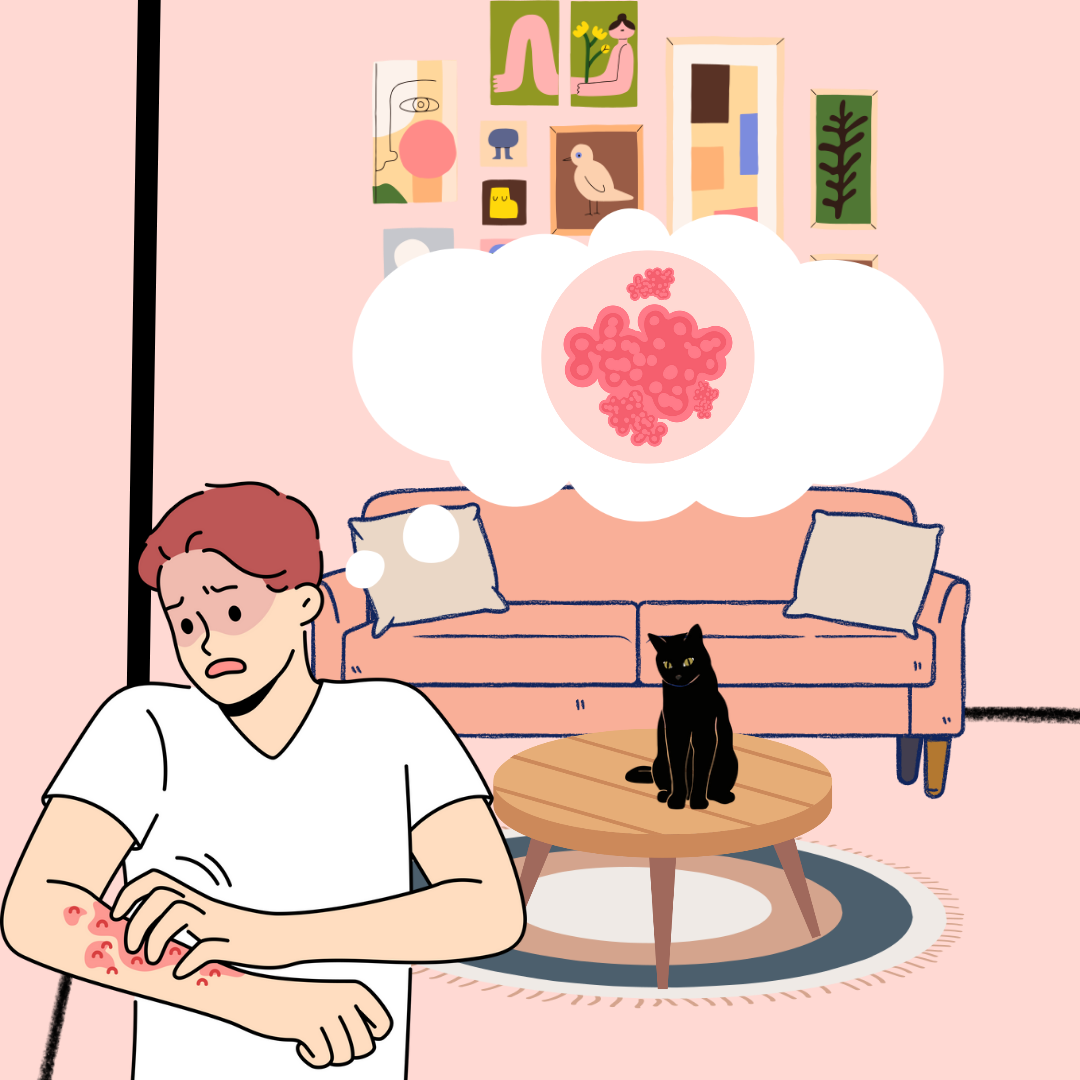Dermatitis is a common skin issue that affects over 10% of the global population. It is characterized by red, itchy, and swollen skin, which can be really annoying. Even though it’s not usually dangerous, it can seriously affect your day-to-day life and confidence.
In addition, dermatitis can pop up on the skin because of factors like allergies, irritating substances, genetic factors, or even stress.

Types of Dermatitis
There are different types of dermatitis like eczema, contact dermatitis, and others.
Atopic dermatitis: This type of dermatitis is also called eczema. It is a type of skin condition that starts in childhood. Eczema can appear anywhere on the body but often affects areas like the elbow, knees, and face.
Symptoms:
- Itchy skin
- Red skin, that shows the affected area
- Swollen and inflamed skin
Contact dermatitis: One of the factors that causes dermatitis is allergens. This type of dermatitis is caused when your skin touches something that irritates it. Contact dermatitis can either be caused by allergens or irritants.
Symptoms:
- Redness of the skin
- Dryness of the skin
- Swelling
- Stinging sensation
Seborrheic dermatitis: This condition is one that affects oily areas of the body like the scalp, face, and upper chest. Seborrheic dermatitis is related to the overgrowth of a yeast-like fungus called Malassezia on the skin.
Symptoms:
- Red skin
- Flaky and greasy patches
Nummular dermatitis: This type is characterized by round, coin-shaped patches of inflamed skin. Nummular dermatitis can happen when the skin is dry, or when you have a healing wound.
Symptoms:
- Red skin
- Itchy and scaly skin
Stasis dermatitis: Stasis dermatitis is related to poor circulation and it affects the lower legs. This is as a result of overweight or blood clots in the leg which stops the flow of blood. This can eventually lead to pressure build up that can lead to stasis dermatitis.
Symptoms:
- Redness of the skin
- Ulcers or sores
Treatment of Dermatitis
The symptoms of dermatitis like dry, cracked skin can be really painful to deal with. The first thing you need to do to stop dermatitis from getting worse is moisturize your skin. Using thick moisturizer to help you lock in moisture, and reduce the itching and irritation. You can apply the moisturizer right after bathing or whenever your skin is dry.
Secondly, you need to figure out what triggers this skin condition. It could be the food you eat, the soap you use, or certain things you may come in contact with. If you eventually figure out what triggers these reactions, you’ll be able to make conscious efforts to avoid it.
Thirdly, there are creams that soothe the redness and swelling of the skin. The doctor will recommend which medication will be suitable for your condition (which other type you have). However, you’ll only be applying the cream on the affected areas.
In addition, if the itching is really bad, especially at night, antihistamines can help you sleep by calming the itch. Lastly, in some cases, doctors might suggest light therapy, which is basically exposing your skin to special light to help reduce the symptoms.
Bottom Line
Dermatitis is a super common skin problem that a lot of people deal with. There are different types of dermatitis, each with its own causes and symptoms. Furthermore, in order to prevent dermatitis, everything comes down to taking care of your skin and avoiding things that might trigger the condition.

















